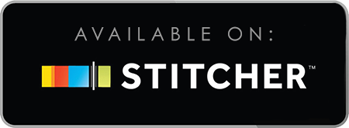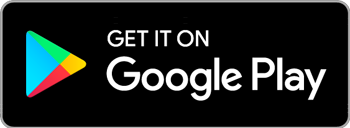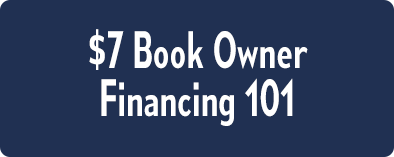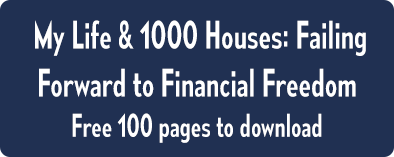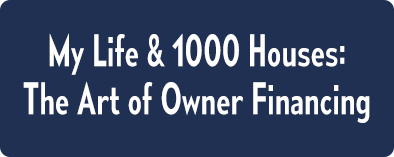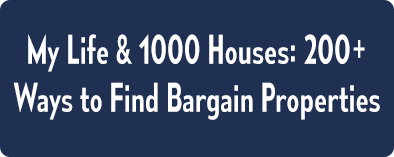PODCAST
Become A Better Coach – Easy! With Mitch Russo
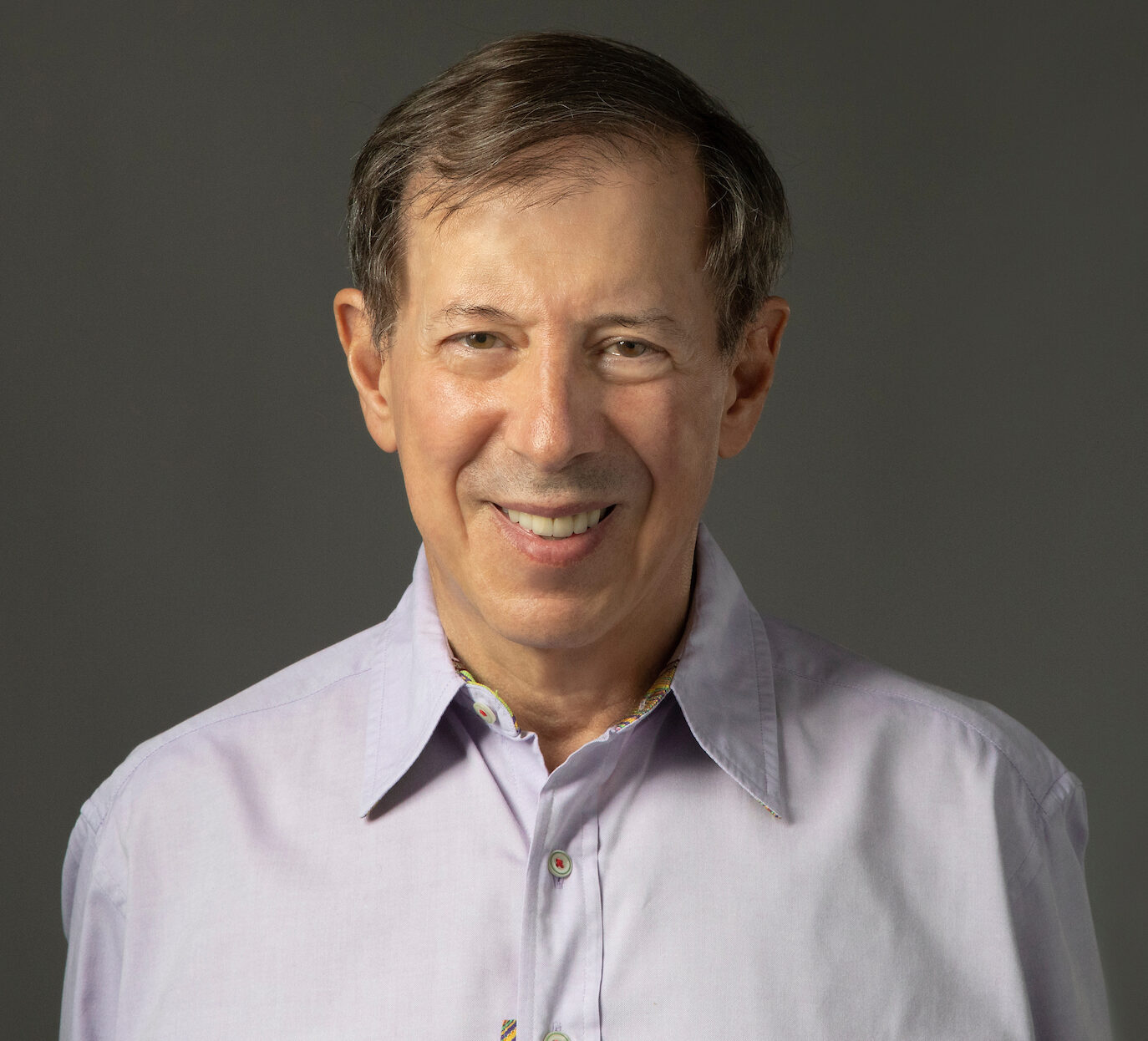

Mitch Stephen chats with
Mitch Russo
Episode 488: Become A Better Coach – Easy! With Mitch Russo

Coaching is far from being an easy job. But with the right tools, you can optimize your processes and become a better coach for your clients. Host Mitch Stephen sits down with Mitch Russo, founder of Timeslips, to discuss his innovative new coaching software, ClientFol.io. Mitch highlights the importance of keeping track of your goals and the importance of feedback in creating and developing a better product. He also shares his personal story of coming from the software industry to coaching and gives some tips on how to become a better coach.
—
Watch the episode here
I am coming to you together with another Mitch. You’re getting a double dose of Mitches. It’s Mitch Russo and Mitch Stephen. We’re going to be talking to you about a software that he has that helps coaches do their thing. It helps them manage their clients and we’re going to learn more about it. I am going to be learning more about it right along with you. I am going to be asking all the questions I can think to ask. I am a coach, not a millhouse but I coach my fair share of people a year, at least as many as I want to. As long as they’re a good fit, I am always looking for the right fit. I am going to find this conversation with Mitch Russo interesting. Mitch, how are you doing?
I’m awesome, Mitch. It’s great to be on your show again.
You’re trying to rinse and repeat a cycle you’ve done before. You sold a software before that was very lucrative, eight figures and that leaves a lot to the imagination. I am going to go with you did really good. Now, you have a new software to help coaches. Let’s start with a little bit of your background and the story of your first product that you sold to the big boys, and then we’ll go on from there.
I started my life in business by building a rock band in high school because I was too shy to pick up girls. I figured a band would help. I was successful on both counts. I was able to finally meet some girls by having a band and then the band started to gain traction. Over the course of about eighteen months, we became the highest-paid high school rock band in the area. We did that through a lot of things that at the seat of my pants, I tried different techniques, which set me up to be an entrepreneur. Things like price testing, quality and all the things that we know about building a business. I used to create a successful rock band back in the 1970s.
What was the name of the band?
Not many people will know the reference but the name of the band is Absolutely Free.
The reason why I asked is I am just curious. Band names always intrigued me like, “Where the heck did they come up with that?”
Never compete against anybody else. Only compete against yourself. Share on XThe name Absolutely Free came from my hero-worship of the rock god, Frank Zappa. Frank Zappa’s first album, which he gave out in front of the Cafe Wha? in Greenwich Village in New York City in the 1960s, was called Absolutely Free.
I played drums in a band for 28 years in a previous life and have been writing songs for at least 47 years. I am going to get good at it any day now. You then built a software. Tell us about that journey.
I loved electronics. I’ve always been a fan and a hobbyist of building stuff and creating things out of electronics. That took me being in the electronics industry and then leaving the electronics industry to start my own software company. That was at the tender age of 28 years old. I bankrolled this new company with $5,000 and partnered up with a super techie, even worse than me. He was responsible for writing all the code and I was responsible for everything else. I was fine with that because I couldn’t write the software. I might as well be responsible for everything else.
We started from there to building the company year after year, growing it in leaps and bounds, but slower than some people might have with venture capital. We didn’t take any financial assistance at all other than a small line of credit. About seven years later, we got our first buyout offer. It was ridiculously low but it woke us up to the idea that somebody might want to buy our company. We then worked with our CFO to increase profits over the course of the next eighteen months and attracted another buyer. It’s double the price that the first buyer offered eighteen months later. Part of that was due to profitability and because we had created a certified consultant program where we had 350 timeslips certified consultants all over the world promoting our products, and they paid us for the privilege of doing that.
It seems like a neat trick that we’ll have to learn something about.
I wrote a book about it called Power Tribes. That’s my second book and that blueprints the entire certification tribe-building process for fun and profit.
You’re passionate about this. I can almost guarantee without having to ask you that you spend every waking hour on the project that you’re on.

Better Coach: Take your time. Get the product right, get the audience right, get the message right, get the testing right, and then blow it up later.
I’ve been accused of that. Yes.
Maybe even while you’re asleep, I am sure you’ve had some dreams about ideas.
It doesn’t stop.
Usually, that’s a requirement for some of these things to get off the ground and become as big as you’ve done them because if it seems like work to you, then you could never put in that many hours. It’s a game to you that you’re trying to win. You’re competing with yourself or against your competitors and you just want to win.
I got to be honest. You’re entirely right, except I never compete against anybody else. I only compete against myself in the past.
You look at your spreadsheets. Yo have sales with this last year, “How do we get these sales up?” I am going to venture to say you review your competitors, just like Patton would read the book by whoever he was fighting so he could figure out how they fought.
He read The Art of War. That was one of his best playbooks many years ago.
Keep track of the goals you set. Share on XI think he read stuff that somebody wrote. He was the Desert Fox. He read his book and figured out how to pursue him. He could figure out what moves he was going to make because he read the book. You got TimeSlips up. You were going and doing the deal. You wrote this book, Power Tribes. You went out and sold that thing for a good profit. Was that the offer eighteen months later or did you continue on and get a different offer after that?
What I decided to do was find another buyer and create an auction. I bought two buyers together. It was an interesting scenario because both of them said, “We don’t like this whole idea of an auction.” I said, “That’s fine. You could drop out any time,” but the other guy was very interested in buying the company. I’ll tell you what the two offers were. You’ll get a kick out of this. The first offer was exactly what we asked for, with no change in structure. Meaning they wouldn’t change a single person or office location, nothing. The second offer was radical. They’ll give us half of our asking price but double in the upside if we can make this work as part of their company. I would have to move to Dallas, Texas, along with my key management team. I am sure you could guess which one of those I chose. Given the opportunity to double what I was asking or the upside, that was too tempting, and that was the one I picked.
You went there. How was that? Were they working together with you or did it ever turn hostile?
It never turned hostile but it was a different world. I grew up in Brooklyn, New York and then Boston, Massachusetts. The company was outside of Boston but we had a fairly conservative Massachusetts culture, and then we moved to Dallas, Texas. Now, we’re in the Wild West. We’re dealing with all kinds of crazy stuff. It was a lot more fun. I wanted the adventure. After running my own company and growing it through all the years I had, I was a little bored. I would love the opportunity to relocate to a new place in a beautiful home and area, make new friends, meet new people, build new connections and have another business adventure, which is to become the Chief Operating Officer of a major public company. That was wonderful.
Were you married and have kids at that time?
At that time, I was married with a daughter. When I moved, my then-wife was seven months pregnant. We moved pregnant to Texas. We had a big-ass motor home. We drove it across the country and stopped along the way. We had a nice little journey out to Dallas. When we got there, it turns out we hardly ever used that motor home again so we got rid of it.
That’s what a motor home is used for. You’re supposed to rent those things. If it floats, flies or faces the ocean, you rent it. Let’s talk about what you’re into now. Tell us about the new product, your new endeavor.

Better Coach: Who is the best buyer for your company? Because if you understand who would buy it, you can create a company that is worth buying.
When I got back from Texas, started looking around and seeing what I wanted to do next, I started helping other entrepreneurs achieve what I had done. There were a lot of people who had underfunded startups that weren’t able to get traction. What I would do is take a piece of equity as part of the deal. I would go in typically as an advisor/consultant and help build the strategic plan. I would roll up my sleeves and do whatever it takes. I would do client calls on the days that I was there as well to understand the company and the process. My goal always was to grow these companies. I ended up either investing/sweat equity investing into about 21 of these startup companies. I was having a good time and loving it.
The bottom line is I became a coach. That’s how I started coaching by helping others grow their businesses in strategic ways. It turns out that I have a process-based memory, which means I don’t remember. I can meet somebody, look at them straight in the eye, be introduced, and forget their name 30 seconds later. If it’s a business process, business model or sales model, it’s indelible in my mind. I will always remember it. When I go in to help some clients, even now, what I am seeing inside of my head is an almost instant three-dimensional model that includes marketing, sales, distribution, management and equity. All of that unfolds for me almost instantly when I see a company. That became the beginning back in 1998 of my true coaching career.
What I found though over the years is that the more I coached, the more admin work I had. I also evolved my coaching practice to do some very important things. If you’re a coach reading this and you don’t do what I am about to say, then you’re going to love this because this is going to supercharge your results. It comes down to the two most important things. One is tracking goals. It sounds so easy like, “Keep track of your goals,” but how many coaches truly keep track of the goals that they help their clients set and monitor them every single week? Very few. What I decided to do was to create a spreadsheet for each client. I started tracking their goals every week. It was getting bigger and messier.
The other thing that I always do is set up accountability questions for every client. We might start the session with accountability questions, and end the session by recording their goals from over the course of the last week or the last time that we were in session together. There was no way I had to record all the stuff. I had spreadsheets, Evernote, web browsers, dropdown, notepads, and all these different things to record this information. In the end, I spent half an hour each session combining that into a single email to send to clients as a client report/homework. It only got worse because then I would get more clients and now I had more work.
The interesting thing about this is that the work took place during peak cognitive periods. Here we would be in the middle of the day, caught into this incredible adventure with this client and enjoying every minute of it. Now, I got to stop and start doing all this admin stuff. I hated it. I started looking for solutions. I went to different websites and looked for coaching software. I bought one after the other and I couldn’t believe that none of them could do what I wanted. I wanted simplicity. If I had to spend 20 to 30 minutes learning something, that was too hard. I certainly didn’t want anything to do with it because it had to be intuitive. I decided finally, after a year of experimenting, I was going to build my own.
What I’ve decided were two core driving goals. My prime directive for building the system is you got to learn it in ten minutes, and it has got to improve your results and save you time. It has to be so inexpensive that even if somebody has a single client, they could afford it. That’s what I did. I spent a year and a half in development. I wireframed the whole thing. I brought a team in that I’ve used before. I’m very confident in their abilities. I said, “How long do you think it’s going to take to build this up?” “Three months.” I said, “Sure. About a year, right?” They went, “Yes, I guess.” It took eighteen months but we finally got it built.
The thing about it that was very satisfying is we started getting clients, accolades and suggestions for improvements immediately. As long as it met the prime directive, I am all there when it comes to suggestions on how to improve a product. Since then, we’ve done some amazing things. I am about to release one of my most exciting features called Two-Way Homework. Imagine this. You send your homework to your clients and they have a question. Instead of sending you an email, they just click on the homework and it pops open a window. They could type their question and it shows up on your desktop. To me, that solves another major ease of use, consolidate effort type of problem. It will be built right into the system.
Client feedback is the best for delivering a quality product. Share on XWhen you started the first one, you had $5,000 and didn’t have any other money. You couldn’t put more of your money in. That’s all you had so you had to grow it grassroots. Starting the second company, you probably got a boatload of money. How did you start the second company? Did you morph between grassroots and having some money? Did you just load it up and get it there fast with your money? Did you say, “I am going to grow this grassroots the way I always have and keep my money?”
The latter. It’s not a matter of keeping my money. I have lots of dry powder to expand at any time I want. We have about 90 days of experience and history with this. Over those past 90 days, we’ve made some fantastic improvements. We’ve refined the interface and done a lot of little things. Probably within the next 60 to 90 days after, I now believe that we have everything exactly the way I am happy with. Since then, we’re also experimenting with Facebook. I have a Facebook guy who has been in my corner for some years now. He has been behind the scenes, $5 a day testing all kinds of audiences, ads, images and messages. I am in no rush. It took me nine months back in the software business to test direct mail. When I got it right, it created millions in revenue. I am of the mind to take my time, get the product, audience, message and testing right, and then blow it up later once I truly believe I have the product to deliver and the testimonials to back it up.
Are you always A/B/C testing?
Always.
You’re more of a guy who wants to grow the business grassroots and make it fund itself along the way. You’re using the money that it makes and plowing it back in because you don’t need the money. It’s keeping the company honest. It has got to earn its way to every level.
One of the rules that I set up for my practice and whenever I work with a client, and they tell me they have a business, I said, “Once you 10X it, who are you going to sell it to?” The question I always ask my clients is, “Who is the best buyer for your company?” If they don’t have an answer, I say, “Let’s do a little bit of research and figure that out.” Why? Because if you understand who would buy it, you can then create a company that is worth buying. Maybe not by them, but by other people. I went through the same exercise. I do eat my own dog food, Mitch. What it comes down to is I took myself through my planning process. I have a full set of my mind maps for my business, flowcharts and projections. This is just what I would do for any client.
What I wanted was a clear vision of what the end result of this will be. I’ve had a buyout offer already and that was in the first 30 days. It was ridiculous. It wasn’t even worth entertaining but it told me that I was on the right path, and that was what I was looking for. I’ve done that work. This is a single-browser window that a coach sits in front of while coaching their client and taking notes, dropping items down the screen into the homework section, recording the answers to their accountability questions, recording their goals numerically, of which are all custom-built. At the end of the session, setting the next date for the next session, uploading any files that you normally would send to your client, and include any Zoom links, one or many, into the session notes. When you click Send Homework Now, your client gets all of this information. As simple as that sounds, it took a lot to make it a simple process and no one else has done that.

Better Coach: Build a better product is all about listening to clients and doing what they suggest.
I want to talk to the audience. I am fixing to ask a price question. Mitch Russo or whoever we talk to has the right to change their prices, lessen them, increase them or do whatever they want to. I am trying to take you off the hook here, Mr. Russo. What is the software running people? Are there different levels or variables? Is it one price? Can you tell us how affordable this product is?
I have a licensed coaching software anywhere from $79 to $379 per month. None of what I’ve licensed fit my needs, as well as what I created for myself and hopefully for you too. The price is $19.97 a month. Unlike other products, there are no limits to the number of clients that you could coach or keep records on. Every time you run a session, it creates a past session record. When you start your next session, you just click on the date of your last session and all your notes are right there for you to study 30 seconds before you get on the call with them. No other product I’ve found has that. In fact, I found the product that looked good and it was free, but it was free for one client. If you wanted to go to five clients, it was $80 a month. It’s none of that baloney. Everything is included and it’s $19.97 a month.
You sure hammered the heck out of that affordability requirement that you wanted. That’s ridiculously low. It’s a no-brainer. I am going to buy it. I’m mostly encouraged by the fact that you said it had to be easy to learn or intuitive. That’s me. I am not a computer tech guy. I’ll get in there and mix it up a little bit but it doesn’t take long to lose me. I am going to try it out myself. I wish I would have known about this a long time ago. Wouldn’t it be nice to have a running tab on your conversations with all your students?
Some of us talk to a lot of people every day, every week. I am fixing to go on my 500th interview. That doesn’t count the interviews where people interviewed me. We had talked a few years ago and until you brought it to the forefront of my mind, it didn’t quite snap. That’s the same way with coaching students. I get them confused. What state are they in? What was his strategy again? Wouldn’t it be nice not to have to make those mistakes or dance around those things until you got yourself the tip that you needed from them without looking like a fool? That would be quite a blessing.
How smart you must look as a coach when you can go back and say, “In the last discussion, we did this. How did we get on this thing?” If you correct them and say, “If you do that, you’re being incongruent with what we talked about in the beginning when we first met.” How sharp does that make you? How much does your stock go up? That student’s mind is saying, “This man has got his collective crap together. He doesn’t miss anything. He knows me.“
You’ve articulated something that I’ve said many times. I want to take that a little bit further. I believe that when you send a client anything, the impression that what you send them makes is a big difference to how they think about you. We put a lot of time and effort into designing a homework email format branded with your logo at the top of every single email that you send.
You’re talking about touches just like sending out the postcards. You’re saying how many touches does it take to impress and indelibly inscribe your logo or brand into this person. When someone is sitting in a room across the way picks up a conversation out of his left ear saying something about a coach, he gets up and says, “You got to have this program?”
Whatever you do, you must find a way to teach what you know to others. Share on XInterestingly, a client of mine showed another one of his buddies the homework that I send him and he said, “Who sent that to you? How did they do that?” All of a sudden now, I am getting a phone call from this guy and he said, “I saw the homework reports that you keep sending to my friend Bob here. I want to know. Do you do that every time by yourself manually? That looks like it takes a lot of work.” I said, “No, five minutes.” He went, “Really?” He then became a subscriber. It’s those little things, Mitch, which I know you will appreciate. When you use a product and the edges are soft, the refinements are in place, it’s doing the job, it’s always available, fast and complete, then you will reflect kindly on the person who created it for you. That’s the goal of what I am doing.
I struggle with some of the things I am doing and I can see your talent for an avenue of struggles. When I am talking about flipping houses or seller-financing houses, I have no problem. I wrote the book. I can do it while I sleep and train people to do it. Can we do it better? Yes, we can always do something better but I pretty much have that hammer and I get bored. I get myself into realms that maybe I am not built for. I see those realms and I see that you’re in one of those realms that I struggle with. You’re amazing to take a product even so simple of an idea. How many years did you invest in it before you launched? Eighteen months, you said?
We have eighteen months of product development, testing and refinement in place before we launched it.
To bring what seems like a really simple concept to the light of day so that it could be used by other people who will never know the complete level of anxiety, money, time, frustration and failures that you went through before you got there to make it look so damn easy.
Isn’t that the formula or the whole idea here?
They’ll then call up and complain?
I want those calls. That’s how we build a better product. That’s how I built TimeSlips back in the 1980s. It was entirely on listening to my clients and doing what they suggested I do. I am back in the seat again. I am here starting another software company. This time completely online as a SaaS product. My client feedback is my best reward for delivering a quality product because I get to make it better.

Better Coach: The best formula is making sure that people like the product and will come back later when they need it again.
If this product sounds intriguing to you, I want you to go to 1000Houses.com/Russo. There are going to be all the links to anything you need to explore this product and website. If you’re an affiliate marketer and this sounds nice to you, he has an affiliate program. You can check it out over there. This is a product I have never heard of before. I think it’s completely original. There might have been some people on the fringes that were tapping on it but didn’t refine it. At $19.97, it sounds like a pretty easy sale to even someone who is dabbling in coaching.
It is a $1 trial. You try it for fourteen days for $1 and then you can make a decision. No individual product will ever be perfect for everyone. We make canceling just as easy as signing up because, first of all, I don’t want the support headache. Second of all, I don’t want to create a bad will for someone who simply doesn’t need it, like it or want it anymore. We make it easy to go in or out because, ultimately, that’s the best formula. It’s making sure that people like the product and we’ll come back later when they need it again.
We’re almost petrified sometimes to click on free trials because we’re afraid we can’t get out. I am glad you made that distinction. Mitch, you’re a lot like this Mitch on the other side. I’m like, “If it’s not a fit, let’s just call it a day, whatever the deal is. If it’s not working, it’s not working.” The point is we should be able to find the ones that it does work for and stay in that camp, and everything will be fine. Do you have some success stories from coaches that are using your software?
I do. It turns out that when I first released it, I have a group of about 100 people in my mastermind and I said, “Anybody who would be interested in giving it a try, we’re in beta, so there’s no charge. If you like it, I would love some testimonials or suggestions you have for improvements.” Let me read you 1 or 2 things from a particular client, a guy named Mark S. A. Smith. He was one of my first clients. He said, “As a CEO/executive performance coach, managing the interactions with my coaching clients is cumbersome and chews up my cognitive capacity, which is what my clients pay for. ClientFol.io solves this problem and adds more useful services, bringing even more value to what I deliver and offering clients constant proof of my value, keeping them with me longer. This is the master coach’s power tool. Expect high returns on your investment.” Mark is a literal genius at what he does. I love the fact that he has high regard for the product. I can keep reading. I have five more just on this one page.
Give us another one.
“ClientFol.io has made my coaching sessions much easier. I now have my notes and homework assignments all in one place. It’s especially helpful when I have back-to-back client sessions. ClientFol.io has all the features I need and none that I don’t. I love that it’s so simple to use that it saves me time. My clients now get an instant reminder of their homework, which is helping me keep them accountable.”
As you can tell out there, this was not contrived at all. I just asked you a question. He has got plenty of testimonials and there’s a lot more from where that came from. I am sure you’ll have to see more of those testimonials if you want to at 1000Houses.com/Russo. I could probably talk to you all day long because I am intrigued by your brain. Normally, I am talking about real estate. This is a little bit different but I know there are a lot of coaching and a lot of gurus out there in the real estate world. I thought it was a good fit, so I wanted to have this interview with you. Did I miss anything that you wanted to talk about or that we should talk about?
I partnered with Tony Robbins. Tony and I built a company together called Business Breakthroughs International and Chet Holmes was our partner. It was Chet, Tony and me. We took that little enterprise from under $2 million in revenue up to nearly $30 million in revenue in about five years, then Chet passed away. At that point, I was heartbroken and I left. I told Tony I needed to take some time and that’s when I started writing. That’s when I wrote my first book and then the second.
I wrote my first book, My Life & 1,000 Houses: Failing Forward to Financial Freedom, because I had a tragedy happen and I didn’t know what I was doing. I never planned and didn’t want to write a book. I never had it on my radar to write a book but in that period of grief, I turned to writing which looked like journaling to me. I was writing to an audience for whatever reason and trying to tell someone my problems. It turned into a book that led to a fascinating turn in my life. You turned to writing in grief too.
I called up my friend, Jay Abraham. I said, “Jay, what do I do now? I don’t know what to do next. I feel like I am lost.” He said, “Mitch, whatever you do, you must find a way to teach what you know to others. I don’t care how you do it, but you got to find a way to do that.” I said, “Jay, what do you mean? What should I do?” He went, “I don’t know, but you got to find a way.” That was almost the end of the call at that point and I pondered that for a couple of months. I started taking some notes of what I had figured out, what I learned from Chet and Tony, and what we ended up learning by building the company. Sooner or later, those notes kept growing. I finally found a story that held and pulled the whole thing together and that’s the book called The Invisible Organization.
We mentioned a couple of books, Power Tribes and The Invisible Organization. I want to thank you for taking the time to come on. It’s always a pleasure. I like to thank all the readers out there for taking some time to get you some Mitch Russo. To learn more about Mitch Russo, his product, books, affiliate program and everything that he has to offer, go to 1000Houses.com/Russo. Thank you so much for being with us, Mitch. I appreciate you very much.
It’s my pleasure.
Important Links
- 1000Houses.com/Russo
- 1000Houses.com/Moat
- 1000Houses.com/Livecomm
- 1000Houses.com/Coaching
- 1000Houses.com/aof
About Mitch Russo
 In 1985, Mitch co-founded Timeslips Corp, which grew to become the largest time tracking Software Company in the world. In 1994, Timeslips Corp was sold to Sage, plc for 8 figures.
In 1985, Mitch co-founded Timeslips Corp, which grew to become the largest time tracking Software Company in the world. In 1994, Timeslips Corp was sold to Sage, plc for 8 figures.
Love the show? Subscribe, rate, review, and share!
Join the Real Estate Investor Summit Community:


